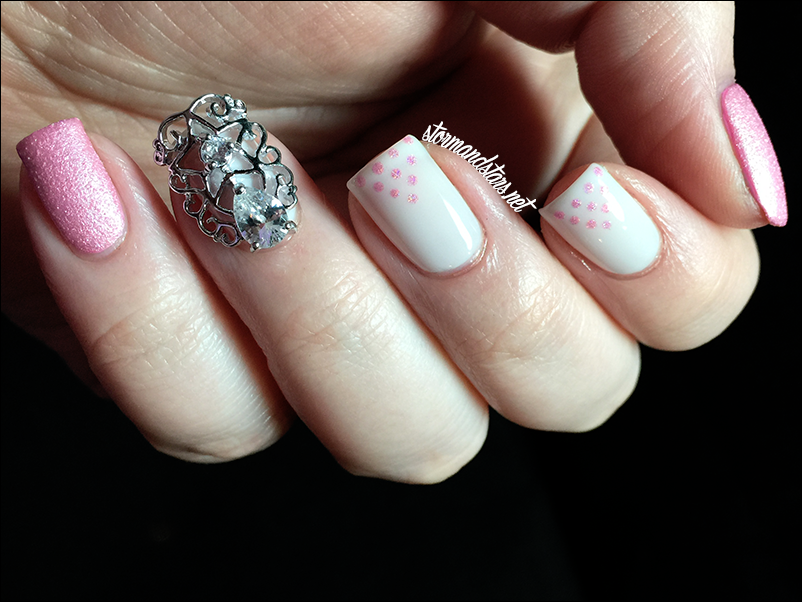Both Gel and Acrylic extensions have the potential to harm your natural nails, causing them to become torn and fragile. This typically occurs when your nails are already weak or when the extensions are applied or removed improperly.
Fortunately, your nails have the ability to recover, although it may take some time. However, there are several straightforward steps you can take to expedite the damaged nail after acrylic.
Therefore, in this article, Nancy Nail will provide you with seven simple tips to recover damaged nail after acrylic and worn-out nails.
Common Tips To Recover Damaged Nail After Acrylic
Ensure adequate moisture for healthy cuticles and nails
The nail matrix, responsible for nail growth, requires proper hydration to support the recovery of damaged nails effectively.bSituated beneath the cuticle area, the nail matrix benefits from hydration and nourishment, making moisturizing the cuticles crucial.
To moisturize the cuticles effectively, it’s advisable to apply an absorbent carrier oil followed by a layer of moisturizing cream to seal in the moisture. Aim to moisturize your cuticles at least three times daily, increasing frequency if your nails are severely damaged, such as after handwashing.
Jojoba oil stands out as an excellent choice for cuticle moisturization due to its superior absorption compared to other oils that may only remain on the skin’s surface.
Give Your Nails a Rest
When you notice that your nails are not looking their best, it’s time to give them a break from harsh nail products like acrylic, gel, polygel, dip powder, or gel polishes. These products often contain strong chemicals such as nail primers or acetone, which can worsen nail damage.
If your nails are already damaged, it’s best to avoid using any nail products for at least 3 to 4 weeks to allow them to heal naturally. Instead, if you still want your nails to look nice without causing further harm, consider using a non-toxic peel-off nail polish. These polishes are water-based and don’t require acetone for removal.

Shield Your Nails
There are various factors can harm your nails and impede their growth.
- 1 – Steer clear of exposing your nails and cuticles to harsh chemicals like alcohol and bleach found in detergents. When handling such substances, it’s advisable to wear protective gloves, particularly during tasks like washing dishes.
- 2 – Refrain from engaging in activities that strain your nails, such as gardening. Physical stress on already fragile nails can exacerbate damage.
- 3 – Limit excessive hand washing, as soap tends to dehydrate the skin. If frequent hand washing is necessary, consider applying cuticle oil to replenish moisture to your cuticles.
Maintaining Short, Rounded Nails
To properly care for brittle and weak nails, trim them periodically, preferably once a week, to keep them short. Allowing weak and thin nails to grow out increases the likelihood of breaking and splitting.
Keep your nails short until they naturally strengthen and thicken. Allowing them to develop too long before they have gained enough strength is not recommended.
Furthermore, shape nails into a circular shape with no sharp edges or points. Nails with sharp edges or points are more likely to catch or snag on things, resulting in quick breaking, particularly if the nails are weak.

Enhance nail growth with supplements
To foster nail growth effectively, certain key vitamins and nutrients play a crucial role. These include biotin, keratin, collagen, iron, vitamin C, zinc, and magnesium.
While these nutrients can be obtained from food, using a quality nail supplement is highly recommended, especially if your nails are damaged.
- Several studies have shown that biotin, a B complex vitamin, can speed up the repair process of brittle nails. It promotes healthy cell development and assists in the conversion of protein into amino acids required for nail growth.
- Keratin, the protein found in your nails, is necessary for nail growth. This procedure depends on your body’s ability to produce enough keratin.
- Collagen is known to promote nail development. Research has shown that it helps to improve nail health.

Properly care for your cuticles
It’s best to avoid cutting your cuticles because doing so can harm them, leaving your nail matrix vulnerable to infection. Instead, it’s advisable to gently push back your cuticles using a cuticle pusher. This helps tidy up your cuticles while preserving their integrity.
Stay hydrated and consume a balanced diet
Drinking plenty of water and eating a well-balanced diet high in important nutrients and vitamins are critical for supporting faster and stronger nail development, especially if your nails have been damaged. Numerous studies have shown that an inadequate diet can inhibit nail growth, resulting in brittle and thin nails.
Can I paint my nails after removing acrylics?
Certainly! After removing acrylic nails, you can indeed paint your nails without any issues. Painting your nails can actually be beneficial as it provides them with some additional care and safeguarding. Here are some helpful tips to ensure the best outcome:
- Allow your nails to fully recover: It’s important to wait until your nails have completely healed from the effects of acrylics before applying nail polish.
- Apply a base coat: To shield your nails and enhance the adhesion of the polish, start by applying a base coat.
- Use regular polish: Instead of opting for acrylics again, choose regular nail polish. This gives your nails a chance to recuperate from the chemicals present in acrylics.
- Steer clear of harsh chemicals: When selecting a polish remover, avoid those containing acetone or other harsh chemicals that can dehydrate your nails and cuticles.
Conclusion
Recover damaged nail after acrylic use is essential for restoring its health and appearance. By following the right tips and treatments, you can successfully repair and strengthen your nails, allowing them to thrive once again.